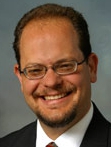Monthly Archives: April 2011
Apr 30, 2011 John FloodLegal Profession
As an ethnographer I subscribe to Everett Hughes’s view:
I am suspicious of any method said to be the one and only. But among the methods I would recommend is the intensive, penetrating look with an imagination as lively and as sociological as it can be made. One of my basic assumptions is that if one quite clearly sees something happen once, it is almost certain to have happened again and again. The burden of proof is on those who claim a thing once seen is an exception; if they look hard, they may find it everywhere, although with some interesting differences in each case.
It is ethnography that enables us to go inside the black box. It is surprising then that the world of law is often neglected in the ethnographic milieu. Anthropologists engaged with it while studying kinship and exchange systems, seeming to take Durkheim’s idea that contract was at the base of the social division of labor. Yet one of the central features of the law is the court which is an alienating environment. Continue reading "The Micro-Sociology of Lawyers’ Actions"
Apr 29, 2011 Kunal ParkerLegal History
This month, I would like to draw legal historians’ attention to an intriguing book, the late Cornelia Vismann’s Files: Law and Media Technology. Vismann (1961 – 2010) was a German legal historian and media theorist whose work needs, in my view, to be far better known among American legal scholars. I had the privilege of meeting Vismann once, years ago, at a conference in Cleveland. It was hard not to be impressed by her brilliance.
At its most basic, Files provides a history of, well, files: those ubiquitous, daunting, overwhelming, often crushingly tedious accompanists of law. Fiction has concerned itself occasionally with files—one thinks of famous works by Kafka and Melville—but academics (especially legal academics) have not often done so. We think of law in all kinds of ways—as a system of ideas, as a form of politics, as a means of exercising power, as a way of shaping social practice, as the troubled realization of justice—but not enough in terms of its materiality, its existence as sheaves of papers inserted into folders, as a forest of folders. And yet, for much of its history, law has been unimaginable without files of one kind or another. Continue reading "Law’s Materials"
Apr 27, 2011 Brian BixJurisprudence
In this brief companion piece to his longer work, “The Correspondence of Contract and Promise,” Jody Kraus displays how a “personal sovereignty” account of individual autonomy can explain the ability of individuals to impose moral obligations on themselves.
Contract Theory has become increasingly focused on the related issues of the philosophical foundations of promising, and the relationship between promise and contract. As Kraus points out in his longer Columbia Law Review piece (“Correspondence”), one cannot reach any conclusions about whether contract law deviates from the morality of promising until one determines the source and extent of the moral obligation of promising.
One view in the area has been that the normative force of promises comes from the social practices and conventions which a community established to make an act of promising sufficient to impose an obligation on the promisor. Kraus notes that Joseph Raz appears to argue that individuals have the power to create normative obligations through promising, because it would be valuable for them to be able to do so. (128) As Kraus discusses in “Personal Sovereignty,” views like these have elicited the skeptical response that one cannot simply create a moral obligation out of thin air. For these skeptics, neither the presence of a social practice or convention nor the claim that the ability to be able to bind oneself would be a good thing, could be sufficient to allow individuals to create new obligations in this way. The skeptics continue, whether a promise creates an obligation depends on some other more basic axiom of moral philosophy (e.g., for the consequentialist, whether keeping this promise will increase overall social utility). Continue reading "Creating Norms"
Apr 25, 2011 Paul M. SecundaWork Law
David J. Doorey,
In Defense of Transnational Domestic Labor Regulation, 43
Vand. J. Transnat’l L. 953 (2010), available at
SSRN.In his new paper, In Defense of Transnational Domestic Labor Regulation, Professor David Doorey has written a meticulously footnoted and researched article on an important issue that is increasingly facing modern democratic economies: to what extent should such countries seek to use their influence to improve labor practices in economically-developing countries? As Doorey explains, the answer is not as simple as merely deciding you want a labor side agreement to the latest free trade agreement. No, in addition to more formal legislative enactments, Doorey thoroughly explains the developing trend of using techniques which exist outside of formal state action, but nevertheless serve to influence and regulate working conditions and employer-employee relationships in third-world countries. Examples of this “de-centered legal orientation” range from nongovernmental organizations (NGOs) monitoring and investigating multi-national corporations (MNCs), industry-led initiatives seeking to eliminate sweatshops, and consumer boycotts of MNCs that employ abusive labor practices. Doorey explains that these types of non-state activities are here to stay and the central issue is whether these informal practices can be put to good use to advance progressive labor policies in third-world countries.
The topic is complex and Doorey should be congratulated for bringing his impressive transnational labor law knowledge to bear on this area of law. It is certainly a must-read paper for anyone who is seriously engaged with workplace issues in the global economy. For instance, Doorey exhaustively reviews the literature in favor of, and against, using legislation that harnesses the power of these more informal practices to push foreign third-world countries to develop more worker-friendly labor policy in their countries. Nevertheless, one is left with at least two compelling questions after reading this thoughtful paper: (1) Will the more informal, new governance-influenced practices which Doorey seeks to harness really lead to the necessary workplace changes that workers’ rights advocates seek in developing countries?; and (2) Given the troubling labor situation in “developed” countries, should such countries not focus more on their own shortcomings when it comes to workers’ rights in order to gain more credibility with nations around the world? Continue reading "New Governance of the Transnational Variety: Can Transnational Domestic Labor Regulation Harness the Power of Private Legal Regulation?"
Apr 22, 2011 Paula MonopoliTrusts & Estates
Palma Joy Strand,
Inheriting Inequality: Wealth, Race and the Laws of Succession, 89
Oregon L. Rev. 453 (2010), available at
SSRN.
In her recent article, Inheriting Inequality: Wealth, Race and the Laws of Succession, Palma Joy Strand unpacks the connection between social mobility and inherited wealth. She situates this discussion within the broader picture of the increasing gap between rich and poor in the United States. Strand isolates the role of race in that trend and she argues that the transmission of inherited wealth, as much if not more than income levels, is a dominant predictor of whether a family will move between classes in American society. Her goal is to develop a theory of the relationship between inheritance and the reproduction of our economic structure. It is an ambitious goal and Strand makes substantial steps toward it in this article.
Strand first presents the data on the increasing inequality of overall wealth accumulation in this country, noting the distinction between “income” and “wealth.” She defines the former as the inflow of resources over time offset by outflows to cover expenses and the latter as accumulated assets most often accrued within the family. Strand cites sociologist Seymour Spilerman for the proposition that “even modest levels of wealth have the ability to “cushion” families, particularly low-income families from economic shocks such as illness or job loss” and that wealth levels are correlated with educational achievement and well-being. With this data, Strand lays the foundation for her argument that we must reform inheritance laws because they have a disparately negative impact on the accumulation of wealth in certain kinds of families. Continue reading "The Impact of Race and Inherited Wealth on Social Mobility"
Apr 20, 2011 Robert RosenCorporate Law
Donald C. Langevoort,
Chasing the Greased Pig Down Wall Street: A Gatekeeper’s Guide to the Psychology, Culture and Ethics of Financial Risk-taking,
Cornell L. Rev. (forthcoming), available at
SSRN.Donald Langevoort demonstrates, again, his ability not only to do behavioral economics but also to reframe it by placing actors in organizational contexts and relations. Behavioral economics, sharing economics’ methodological individualism, analyzes biases and cognitive heuristics in regards to individual risk taking. More broadly, social psychology investigates decision effects that result from affects, visceral and cultural factors, as well as pressures toward or against groups and authority. For example, Solomon Asch emphasized that people make decisions in public differently than they would in private, based on their impressions of others, and seeking legitimacy. Langevoort presents research that builds on Asch, for example the finding that in the presence of an audience, facing rivals, with time pressure to make a mark, individual motivation may shift from goal attainment to an obsession with winning at all costs. Such work not only uncovers other sources of bias, but also it reframes the subject as decision-making rather than only risk-taking. In “the ‘competitive arousal’ model of decision making,” the actor doesn’t engage in risk analysis, rather other motivations and models engage the actor. For some it is Tversky or Asch. Langevoort learns and masters work in both traditions, and more.
Langevoort’s subjects are the decisions that led to the Global Financial Crisis (GFC) and what gatekeepers need to learn from it. A principal-agent approach to the GFC demands explaining excessive risk-taking by theoretically risk-averse employees (invested in and frightened of losing their jobs). Although he has proffered other explanations, in this article, Langevoort focuses on the firm’s shaping of actor’s understandings and motivations. A principal-agent approach normally addresses the design of appropriate contracts, incentives, compensation and monitoring systems. In this article, Langevoort focuses on understanding the firm’s organizational culture. Continue reading "Inviting both Amos Tversky and Solomon Asch: It’s not all Casino Capitalism"
Apr 18, 2011 Ann BartowTechnology Law
The abstract of the piece lays out the author’s thesis very cleanly and clearly in a single sentence: “… [E]ven though Facebook users have privacy options to control who sees what content, this Article concludes that every single one of Facebook‘s 133 million active users in the United States lack a reasonable expectation of privacy from government surveillance of virtually all of their online activity.” Semitsu begins the piece by explaining the social and political importance of Facebook in a compelling way. To take just one example, he observes a huge percentage of matrimonial lawyers have used or faced evidence found on social networking sites in during divorce proceedings. He then explains that while people may use the privacy controls that Facebook provides them in ways that successfully mediates the information exchanges they have with other private citizens or with commercial entities, these controls have no meaning vis a vis the government. This is because literal application of the Third Party Doctrine means Facebook users can’t have a reasonable expectation of privacy in anything they post. And potentially pertinent provisions of the Electronic Communications Privacy Act may not even apply to Facebook-based communications. Therefore, as Semitsu cogently explains, “though Facebook has been justifiably criticized for its weak and shifting privacy rules, even if it adopted the strongest and clearest policies possible, its users would still lack reasonable expectations of privacy under federal law.”
Semitsu evaluates Facebook’s architecture, its evolving approaches to user privacy, noting that Facebook users may misunderstand their actual ability to delete their accounts or keep information confidential, and that many decline to take advantage of the privacy tools that are available to them. He observes that the situation is pretty similar at other social networking sites as well. Then he launches into an extended elucidation of how the government uses Facebook as an investigative tool. He compellingly illustrates the non-piddling possibilities by explaining how a campus police officer used Facebook to become a whiz at apprehending a University of Illinois student observed urinating in public. Facebook was deployed by law enforcement not because the crime was significant but because it is a fast, cheap and easy way to identify those suspected of extremely minor infractions, who might not have even been pursued if more resources were necessary to bring him to justice. Continue reading "Facebook and the Fourth Amendment: Expecting Any Privacy May Be Unreasonable"
Apr 13, 2011 JotwellCourts Law
Courts Law Section Editors
The Section Editors choose the Contributing Editors and exercise editorial control over their section. In addition, each Section Editor will write at least one contribution (”jot”) per year. Questions about contributing to a section ought usually to be addressed to the section editors.

Professor Adam Steinman
Professor of Law
Seton Hall University School of Law

Professor Howard M. Wasserman
Associate Professor of Law
Florida International University College of Law Continue reading "Meet the Editors"
Apr 13, 2011 JotwellJotwell
Today we inaugurate a new Jotwell section on Courts Law, edited by Professor Howard M. Wasserman of Florida International University College of Law and Professor Adam Steinman of Seton Hall University School of Law. Together they have recruited a stellar team of Contributing Editors.
The first posting in the Courts Law section is Evidence Meets Civil Procedure by Howard M. Wasserman. Expect other new sections in the coming months.
Please note our Call For Papers, and get in touch if you have suggestions for a new section, or if you have a review you would like to contribute to Jotwell.
Apr 13, 2011 Howard M. WassermanCourts Law
Michael S. Pardo,
Pleadings, Proof, and Judgment: A Unified Theory of Civil Litigation,
51 B.C L. Rev. 1451 (2010).
Perhaps the highest praise for any piece of scholarship is “I wish I had thought of that.” As someone who writes in civil procedure and dabbles in evidence, that was my reaction to Michael Pardo’s Pleadings, Proof, and Judgment: A Unified Theory of Civil Litigation. Pardo, for arguably the first time, links non-trial dispositive procedures in civil litigation (Dismissal for Failure to State a Claim, Summary Judgment, and Judgment as a Matter of Law) to the underlying law of evidence that would control the claim at trial. The result is a theory of “procedural accuracy,” under which evidentiary proof rules (especially as to burden and standard of persuasion) inform and provide content to the operation of dispositive procedures, ensuring that those devices produce procedural outcomes that align with the outcomes and policies dictated by evidentiary proof rules. By drawing these links, Pardo both justifies the use of non-trial dispositive procedure and shows how those procedures should properly function.
Courts and commentators have largely ignored this procedure-evidence link. Perhaps this is another by-product of the “disappearing trial.” Because civil actions, especially in federal court, so rarely get to trial (in 2009, trial began in approximately 3 % of civil cases, which actually represented a slight increase from a few years prior), the tendency is not to think about civil actions or civil procedure in trial terms, but only in terms of dispositive non-trial procedure. There has been no systematic effort to link the ordinary operation of dispositive procedure to the controlling evidentiary standards. The Supreme Court has twice drawn these connections.
This is the gap that Pardo fills. Continue reading "Evidence Meets Civil Procedure"















